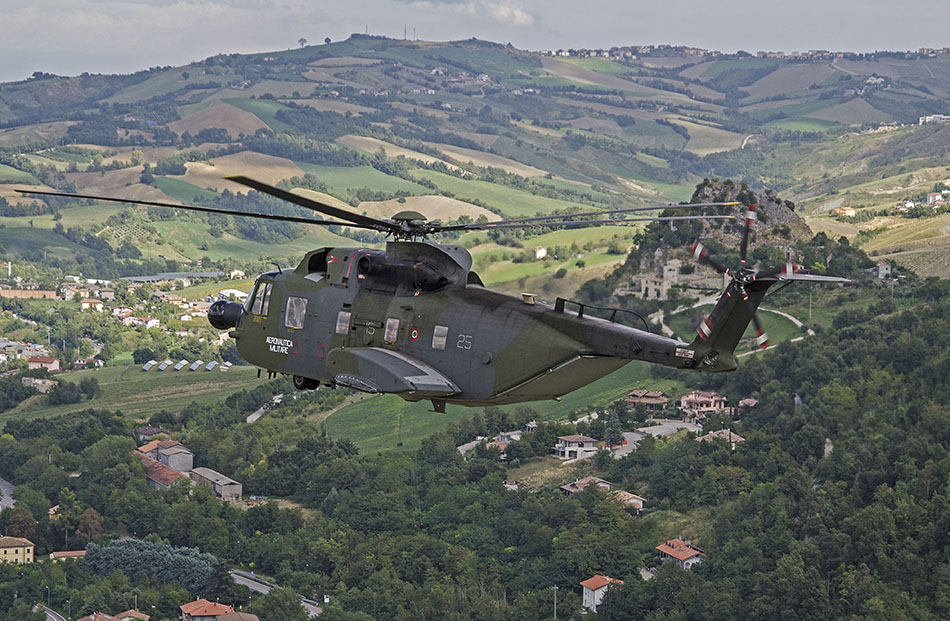AVIOBOOK.com
"the on line aviation corner"
edited by mauro finati/flighline iaps and paolo rollino/aviation reports
15th SAR WING
ITALIAN AIR FORCE SAR COMPONENT IS REPLACING THE FLEET
(text and pictures by Mauro Finati & Paolo Rollino)
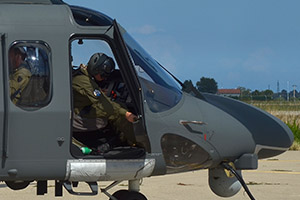
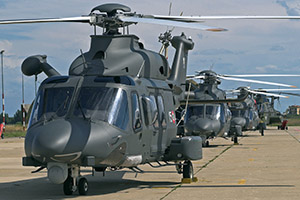
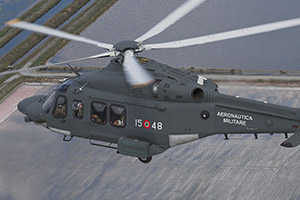
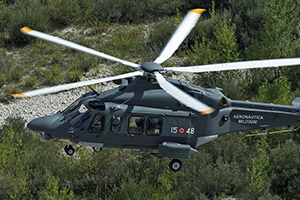
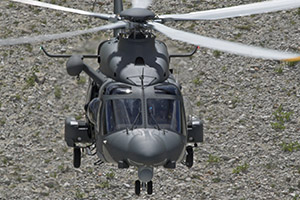
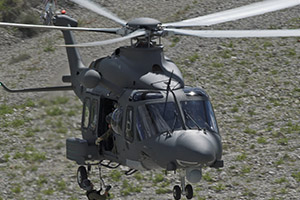
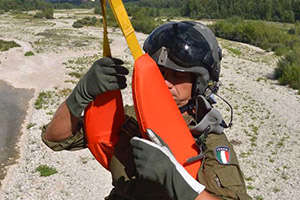
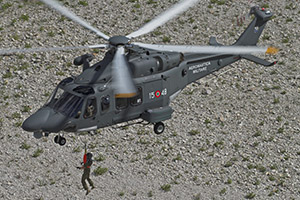
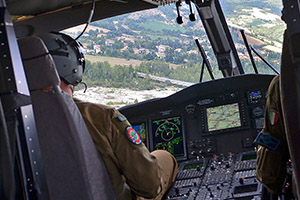
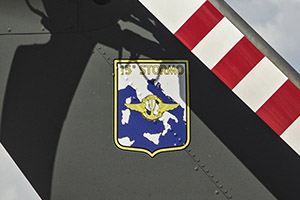
On 23 October 2008, while overflying over France to join a tactical leadership exercise at Florennes, Belgium, an Italian Air Force (AMI - Aeronautica Militare Italiana)
HH-3F helicopter (MM80981/15-10) suffered a devastating inflight failure of the main rotor, resulting in the crash of the helicopter and in the loss of eight lives.
This episode dramatically brought the state of the air force's rotary-wing fleet to the attention of the Italian government, and in particular the HH-3F Pelican, which
had been in service with the 15th SAR/CSAR Wing for almost 30 years. The helicopter was introduced into service in two separate batches, all produced in Italy by Agusta
at Vergiate. The first series of 20 aircraft was delivered between 1977 and 1982, with a second of 15 between 1991 and 1992. The latter batch was directly produced to
'Bravo' standard, optimised for the Combat SAR role, and the former were gradually updated to the same standard during major overhauls.
As a result of the tragic incident, some modifications were introduced during the servicing of the machines. However, the progressive withdrawal of the Pelican from the
fleet was also planned, with the adoption of new helicopters and a reorganization of the AMI's entire SAR/CSAR structure.
The AgustaWestland AW139 (HH-139A) and AW-101 (HH-101) were chosen as the replacement aircraft, and at the end of 2010 a contract was signed the for the purchase of ten
of the former, with three more on option. A total of 12 AW101 are also being acquired, with a potential option for three more.
We then discuss the new organizational challenges that await the Wing with Lt Col Giacomo Zanetti, Chief of Air Operations, who welcomes us for a news briefing. He is a
well experienced helicopter pilot with some 2200 flight hours on SF-260, MB-339, TH-500, HH-3F, AB-205, and HH-139. 15th Wing Commander is currently Col. Franco Trozzi.
The 15th Wing -whose motto is 'Nec In Somno Quies' (the quiet is not even in the sleep)- has a complex structure, with flying units spread across Italy, covering most
of its territory. From 5 October 2010, the control unit was transferred from Practica di Mare (Rome) to Cervia (Ravenna), the last homebase for the F-16ADFs of the 5°
Stormo (5th Wing). 15th Wing's Command and the main support and logistic structures are located here, together with the rotary-wing fleet major overhaul centre. Among
the flying units is the 81st Crews Training Centre (81° Centro Addestramento Equipaggi - CAE), currently equipped with a single TH-500B (NH-500E), two HH-212As (AB-212E)
and four HH-139As. This unit is in charge of the training personnel, pilots, onboard operators, and air rescuemen (ARS). The operational unit at Cervia is the 83rd CSAR
Group (83° Gruppo CSAR) with three HH-3Fs. It is in the transition phase to the HH-139A and, by year-end, will start receiving the new helicopter from the CAE.
The other flying units subordinate to the Wing are: the 82nd SAR Centre (82° Centro SAR) at Trapani-Birgi AB with three HH-139As; the 84th SAR Centre at Gioia del Colle
AB, also with three AW139s; and the 85th SAR Centre at Pratica di Mare AB, which operates the remaining HH-3F Pelicans, although it is awaiting for the new machines
under options. Each SAR Centre will then operate a fleet of three HH-139As, while only one will remain with the CAE for training duties. Each SAR Center also has a single
TH-500B available for liaison tasks, except the 84th at Gioia del Colle AB, which has two examples.
The HH-101 Caesar, meanwhile, will be a specially equipped version for Combat SAR and Special Operations missions, with advanced avionics, active and passive self-protection
systems, onboard armament, more powerful engines, and inflight refuelling probe. The HH-101 will be optimized for high precision, long- range and low-level navigation
in close contact with the ground to take advantage of the terrain. The first of 12 machines on order is expected to be assigned to a unit at the end of 2014 - or beginning
of 2015 - and the last one three years later. It is not yet clear which unit will be assigned these machines first. However it is likely that some will equip the 21st
Group at Grazzanise AB, which is still flying the HH-212s in the CSAR role.
Lt Col Zanetti shows us the main activities of the 15th Wing. Its staff provides search and rescue missions for flight crews in distress 24 hours in a day, 365 days a year,
over land and sea. The unit also contributing to such public benefit activities as emergency medical transportation. From its inception to the present day, the crews
of the 15th Wing have saved about 7,000 people in danger. Floods, earthquakes, shipwrecks, fires, emergency medical transport from ships and from Mediterranean islands,
protection of sensitive events, all these situations saw the intervention of the crews and the helicopters of the 15th Wing. In addition, in view of their flight
capacity offered by the specific instruments (FLIR, NVG, etc.) aircraft of the unit are often used in night-time activities.
It is also statistically significant the activity carried out for the benefit of the civilian population: search and rescue missions at sea in collaboration with the
Capitanerie di Porto (Coast Guard) and in the mountains with the help of the staff of CNSAS (Corpo Nazionale del Soccorso Alpino e Speleologico - National Alpine and
Speleological Rescue Unit). In addition, the 15th Wing helicopters often take action in the event of natural disasters under the control/coordination of Civil
Protection. Regarding military activities, the Wing has deployed machines and crews abroad many times, most of these as part international missions, such as the
detachment of four HH-3Fs to Cyprus during the hijacking of the ship Achille Lauro, Operation "Restore Hope" and "Albatross" in Somalia, operations in Bosnia, as well
as "Antica Babilonia" in Iraq.
NEW HELICOPTERS
The arrival of the first HH-139A at Cervia in January 2012 marked the beginning of the new chapter for the 15th Wing and the start of the modernization of AMI's helicopters
fleet. The HH-139A is based on the AW139M model which is the "militarized" version of the now ubiquitous medium-size AgustaWestland helicopter, with over 700 examples
produced to date. As such, it is not a machine specifically developed for military use, but represents an adaptation. In fact, it was acquired by the Air Force as an
"interim" solution, because the final platform is intended to be a mission-specific version of the new multirole AW149, currently under development. Italian Army is also
interested in this model for the replacement of its AB-212s and AB-412s. However, the acquisition schedule for the SAR variant acquisition will depend on available
economic resources.
In any case, the AW139 is a highly regarded solution for SAR activities due to its proven reliability and flight performance. In a typical configuration, the helicopter
has a crew of two pilots, an onboard operator and a single air rescueman, and can accommodate a maximum of three passengers.
In transport configuration, the helicopter has a maximum capacity of 14 passengers, or for MEDEVAC missions can be equipped with four stretchers. The flight performances
are high because the HH-139A can support a maximum cruise speed, in order of 160kt with very low vibration level. Endurance is around 2.5 hours, which can be extended
by 30 minutes using an internal auxiliary tank. With a maximum take-off weight (MTOW) of 6.400kg (4.500kg empty weight), the helicopter has a power/weight ratio that
allows safe use even in operations at high altitude in mountainous terrain, The HH-139A is powered by a reliable pair of Pratt & Whitney Canada PT6C-67C turboshafts,
rated at 1.679shp each.
In comparison, the Pelican T58-GE-5 engines can offer only 1.521shp against an MTOW of 10,000 kg (6.200kgs empty). On the other hand, the HH-3F can offer greater
internal space and an endurance of up to 5 hours, albeit with a lower cruising speed. The standard crew of the Pelican consists of two pilots, two operators and one air
rescueman.
The new HH-139 helicopter well represents the transition from an old analogue technology to a fully digital machine. The new aircraft is equipped, among all the other
things, with an integrated NVG-compatible glass cockpit featuring 8×10in active matrix liquid crystal displays, with advanced graphics capabilities and cursor control
devices.
The cockpit also features four-axis digital automatic flight control system with SAR modes and flight management system SAR patterns, weather/search radar, TCAS
(Traffic Collision Avoidance System) II, a nose-mounted advanced FLIR (Forward Looking Infra-Red), Health and Usage Monitoring System (HUMS), digital video recorder,
Video downlink, moving map on flat display, Auto-Deployable Emergency Locator Transmitter (ADELT) and Enhanced Ground Proximity Warning System (EGPWS), as well secure
communications suite, an integrated defensive aids suite, hoist, searchlight, wire cutters, loudspeaker system and emergency floatation gear. For the CSAR role, the HH-139A
can be equipped with two wing-mounted pods for 70mm unguided rockets.
Navigation information can now be viewed on the five screens within the MFD cockpit, rather than dispersed across a multitude panels. A central monitor is connected to the GPS
data to complete navigation and directly shows the location on a map. In addition, full night operations are possible through a latest generation Star Safire III FLIR
System equipped with HD camcorder and tracking function, a searchlight from six million candles and full compatibility with NVGs.
The AMI aircraft have also been fitted with new heavy-duty reinforced raised landing gear to allow landings on rough and steep terrain. Unlike the HH-3F, the HH-139 does
not possess amphibious characteristics, but can operate in the hover at a minimum altitude of 15ft above water.
The FLIR camera, controlled by the co-pilot and the operator in the cabin, can be used for terrain control and target monitoring and allows night-time recording too.
These helicopters also have a ventral cargo hook for up to 2,200kg of hanging payloads, and are equipped with an external winch capable of lifting loads of up to 270kg
using a 80m-long cable.
The introduction into service of the HH-139A was carried out with the full assistance of AgustaWestland, whichinitially made a standard AW-139 available at Cervia air
base, for a period of 1,000 flight hours, ensuring a fast transition for a number of crews. The theoretical training of personnel is carried out at the company's
Training Academy in Sesto Calende, where pilots also perform flying activities with the simulator.
Operational training is carried out by the 81st CAE. Specific procedures for SAR HH-139A were developed by the 15th Wing with the assistance of the RSV (Reparto
Sperimentale Volo) staff at Practica di Mare AB. The CAE is also responsible for search and rescue training of aircrew within other Italian Military Corps, such as the
Coast Guard, the State Police, and Carabinieri.
The 15th Wing was founded in 1931 on the eve of a troubled and dramatic period for Italy and the whole world. The unit therefore prides itself on its warrior traditions,
but also its humanitarian missions. In the words of one 15th Wing SAR pilot: "Air rescue is an extraordinary discipline that already pays only with the grateful and
pleased look of people who, having believed to have come to an end, thanks to our work can have a second chance".
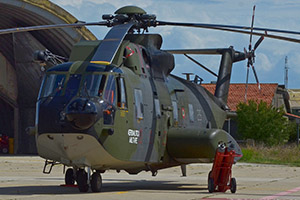
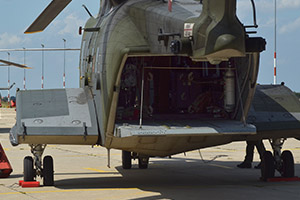
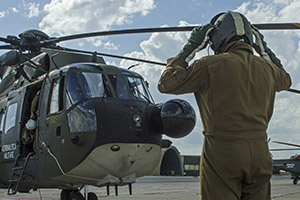
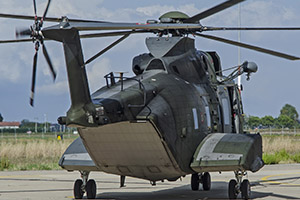
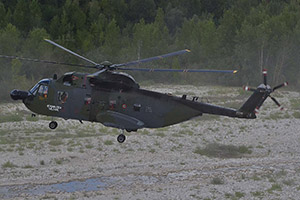
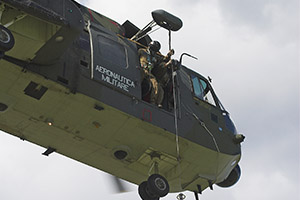
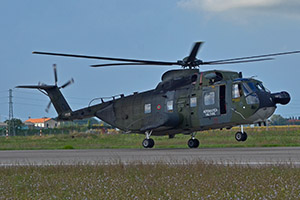
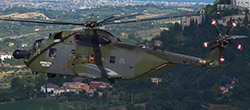
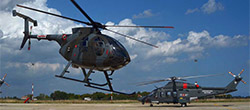
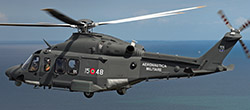
Special thanks to Capt D'Elia for the assistance and help during the visit
2014©Paolo Rollino/pierrestudio
